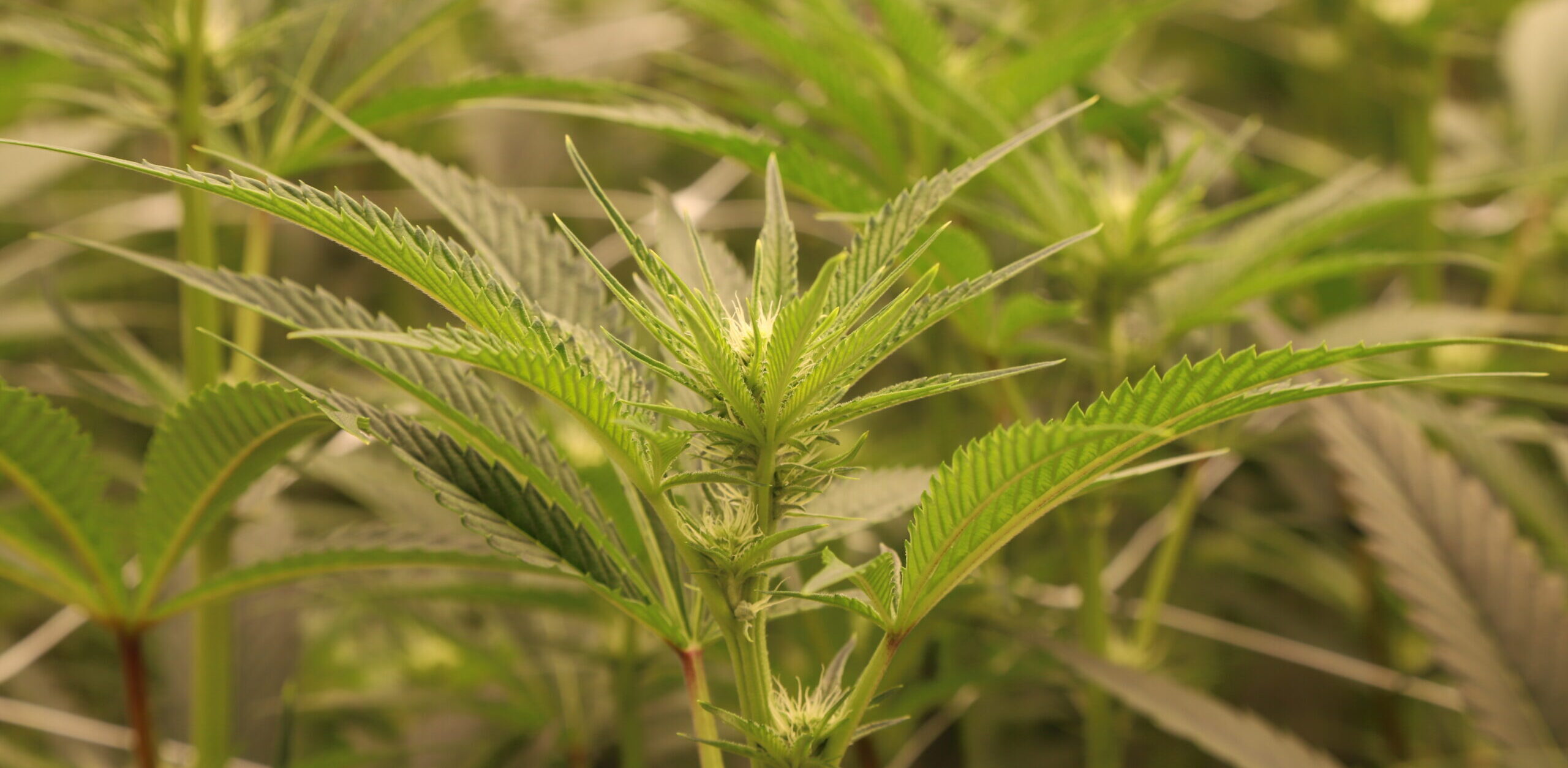Cannabis is a unique plant species. It is one of 6% of plants that are dioecious, which means they have either male or female organs on each plant. In medical cannabis, the true power lies in the female flower.
How To Spot the Difference
Usually, male cannabis plants reveal their gender a little earlier than female plants during the ‘pre-flowering’ stage. The most identifiable feature of the male cannabis plant is its pollen sacs. These pollen sacs are often found in clusters at the nodes, where the branches meet the stem. They continue to develop throughout the male plant’s flowering phase, forming large clusters that are typically sparse and open.

Pollen sacs at the node of a male cannabis plant
Female plants, on the other hand, have reproductive organs called pistils. The pistil consists of 3 main parts, some of which are visible to the naked eye.
The Stigma
The stigma is a distinctive part of the female cannabis plant and is often described as a “hair”. Its role is to catch pollen grains during pollination. In the early stages of growth, they appear white, yellow, or even pink. As the flower matures, the stigmas take on an amber hue.
The Style
The style is a tube that connects the stigma to the ovary. It is very small and can be found beneath the stigma. The style is essential for natural fertilisation and seed production. However, in medical cannabis cultivation, its role is less significant, as the primary objective is to prevent seed production.
The Ovary
The ovary sits at the pistil’s base and contains all the female plant’s genetic material. This can vary in size prior to pollination, and having large ova in medical cannabis can be undesirable. This is because they can lead to harshness, bad taste, and even “pop” like popcorn when heated in a vaporiser.

KBQ24 Medical Cannabis
Both the ovary and style of the cannabis plant can be found in a modified leaf structure called a bract, which is often incorrectly referred to as a calyx. These bracts are teardrop shaped, and are covered in trichomes, which are where most of the medical cannabinoids are produced and stored.
Why do we separate the male and female plants?
Male plants do not produce the dense, resinous buds that female cannabis plants do. Their role is to spread genetic material by pollinating the female plants. However, when a female is pollinated, their energy is diverted into seed production as opposed to producing high-quality buds. Therefore, it is important to keep the females separate in order to produce a high resin cannabis flower known as “sinsemilla”, literally meaning “without seeds”.
Cultivating Female Flower Power
The key to cultivating female flower power is consistency. Consistency reduces stress and maximises quality.
We spoke with our Head Grower, Brady Green about some of his techniques to keep our females stress-free:
The Future is Female. At Dalgety, we’re all about empowering our ladies to thrive. With precision care, a stress-free environment, and the perfect balance of nutrients, light, and airflow, we ensure they reach their full potential—strong, resilient, and full of power. Here’s to the female cannabis flower, growing, thriving, and making a difference in patients’ lives.
Glossary:
Bract: A type of leaf that grows from the area just below a flower and is sometimes different in shape or colour from the main leaves. (Cambridge Dictionary)
Calyx: The outer part of a flower formed by the sepals (the separate outer parts), which covers and protects the petals, etc. as they develop. (Cambridge Dictionary)
Nodes: A place where a leaf and stem join on a plant (Cambridge Dictionary)
Sinsemilla: Without Seeds. A term often used to describe the unfertilised, highly resinous cannabis plants.
Trichome: Trichomes are defined as unicellular or multicellular appendages, which are an extension of the above-ground epidermal cells in plants. Trichomes are a protective barrier against natural hazards, such as herbivores, ultraviolet (UV) irradiation, pathogen attacks, excessive transpiration, seed spread, and seed protection.
Sources:
Cambridge Dictionary | English Dictionary, Translations & Thesaurus
Dowling, Caroline & Melzer, Rainer & Schilling, Susanne. (2021). “Timing is everything: the genetics of flowering time in Cannabis sativa.”, The Biochemist, DOI: 43. 34-38. 10.1042/bio_2021_138.
Wang, X., Shen, C., Meng, P. et al. (2021) “Analysis and review of trichomes in plants.” BMC Plant Biol 21, 70, https://doi.org/10.1186/s12870-021-02840-x
Disclaimer: The information provided in this blog is for educational purposes only and is intended for healthcare professionals involved in the prescribing and administration of cannabis-based medicinal products (CBMPs). It does not constitute medical advice, diagnosis, or treatment recommendations. While every effort has been made to ensure accuracy, regulatory guidelines and clinical best practices may evolve. Prescribers should refer to the latest guidance from the Medicines and Healthcare products Regulatory Agency (MHRA), the National Institute for Health and Care Excellence (NICE), and other relevant bodies when making treatment decisions. Dalgety does not endorse any specific product or treatment pathway and encourages healthcare professionals to exercise their clinical judgement in patient care.




